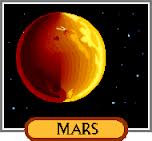In 2010, NASA and the National Science Foundation asked the National Research Council to assemble a committee of experts (the decadal survey committee) to develop an integrated national strategy that would guide agency investments in solar and space physics (or heliophysics in the terminology used by NASA) for the years 2013-2022. That strategy, the result of nearly 2 years of effort by the survey committee, which worked with more than 100 scientists and engineers on eight supporting study panels, is presented in the 2013 publication, Solar and Space Physics: A Science for a Technological Society. This booklet, designed to be accessible to a broader audience of policymakers and the interested public, summarizes the content of that report but does not replace, nor should it be construed, as a substitute for the findings and recommendations of the actual report. For more info contact NTIS 800-553-6847 Mon – Fri 8am -5pm est
![images[7]](https://ntis.scienceblog.com/files/2014/09/images7.jpg)
Space Missions
Launch and Assembly Reliability Analysis for Mars Human Space Exploration Missions
 NASA’s long-range goal is focused upon human exploration of Mars. Missions to Mars will require campaigns of multiple launches to assemble Mars Transfer Vehicles in Earth orbit. Launch campaigns are subject to delays, launch vehicles can fail to place their payloads into the required orbit, and spacecraft may fail during the assembly process or while loitering prior to the Trans-Mars Injection (TMI) burn. Additionally, missions to Mars have constrained departure windows lasting approximately sixty days that repeat approximately every two years. Ensuring high reliability of launching and assembling all required elements in time to support the TMI window will be a key enabler to mission success. This paper describes an integrated methodology for analyzing and improving the reliability of the launch and assembly campaign phase. A discrete event simulation involves several pertinent risk factors including, but not limited to: manufacturing completion; transportation; ground processing; launch countdown; ascent; rendezvous and docking, assembly, and orbital operations leading up to TMI. The model accommodates varying numbers of launches, including the potential for spare launches. Having a spare launch capability provides significant improvement to mission success. For more
NASA’s long-range goal is focused upon human exploration of Mars. Missions to Mars will require campaigns of multiple launches to assemble Mars Transfer Vehicles in Earth orbit. Launch campaigns are subject to delays, launch vehicles can fail to place their payloads into the required orbit, and spacecraft may fail during the assembly process or while loitering prior to the Trans-Mars Injection (TMI) burn. Additionally, missions to Mars have constrained departure windows lasting approximately sixty days that repeat approximately every two years. Ensuring high reliability of launching and assembling all required elements in time to support the TMI window will be a key enabler to mission success. This paper describes an integrated methodology for analyzing and improving the reliability of the launch and assembly campaign phase. A discrete event simulation involves several pertinent risk factors including, but not limited to: manufacturing completion; transportation; ground processing; launch countdown; ascent; rendezvous and docking, assembly, and orbital operations leading up to TMI. The model accommodates varying numbers of launches, including the potential for spare launches. Having a spare launch capability provides significant improvement to mission success. For more
info please go to: http://www.ntis.gov/search/product.aspx?ABBR=N20130012764
| Personal Author | C. Stromgren G. R. Cates K. E. Goodliff W. M. Cirillo | |